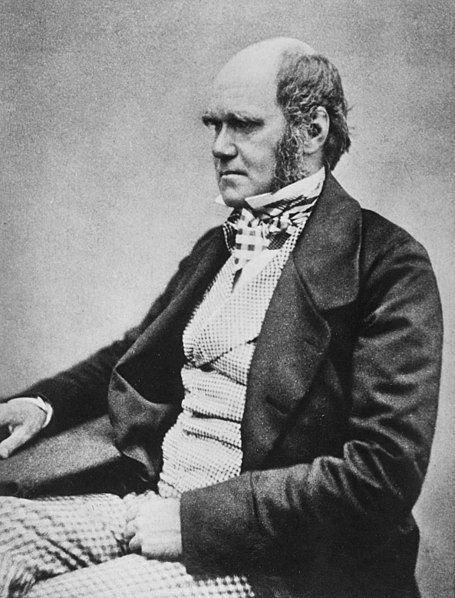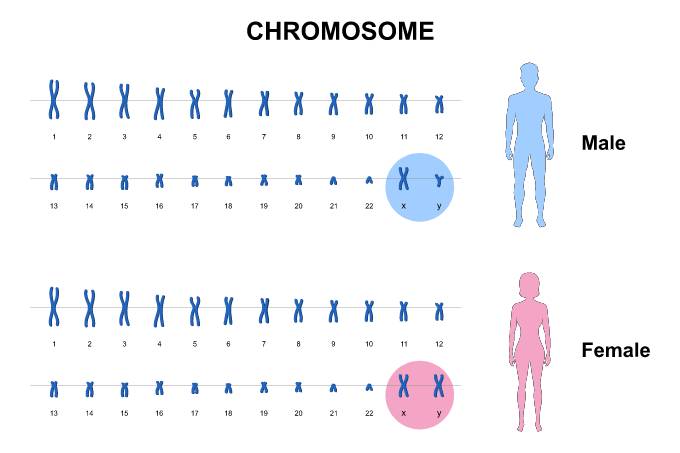Here’s the answer to the question you didn’t know you wanted. Yes, men can lactate.
Not only can men lactate, but it is more likely to happen in human men than in most other mammals. Our biology is such that the conditions for male lactation are relatively easy to achieve.
And if you don’t believe it, here’s what Darwin had to say on the subject:
“It is well known that in the males of all mammals, including man, rudimentary mammae exist. These in several instances have become well developed and have yielded a copious supply of milk.” — Charles Darwin.

Even back in Darwin’s time, male lactation was a thing.
Anecdotal evidence
There have been numerous stories of male lactation through the ages. Some are probably not meant literally (as in the Bible or the Talmud, where there are references to a nursing father). Others are fictional, such as Anna Karenina by Tolstoy, referencing a man breast-feeding a baby onboard a ship.
But some of these stories have a basis. As far back as the 19th Century, scientific publications have referenced male milk production. In a compendium of scientific oddities called Anomalies and Curiosities of Medicine from 1896, they made observations of male spontaneous lactation. Alexander von Humboldt, a well-known Prussian explorer and naturalist, allegedly witnessed a South African male providing breast milk for his child.
Read more: How lobsters communicate: You think you’ve got problems?
As recently as 2002, a Sri Lankan man made headlines about breastfeeding his daughter when his wife died. Mr. Wijeratne tried baby formula, but the baby rejected it. He then tried his breast and discovered he had milk.
World War II
Miraculous milk generation aside, there are also medical reasons why a man might start producing milk. During the second world war, some male prisoners in concentration camps began lactating when rescued.
After an intense period of starvation, stress, and maltreatment, these prisoners’ body functions had decreased, including the liver and pituitary gland. When these men began to heal and were given a proper diet, the gland recovered faster than the liver.
The pituitary gland is one of the body’s hormone-producing glands and, amongst other things, produces prolactin, the hormone responsible for triggering milk production. The liver is responsible for metabolizing hormones to control the correct levels. When these men began to eat again, prolactin levels increased as the pituitary produced hormones faster than the still damaged liver could remove them. This physiological phenomenon triggered lactation.
Illness & Medication
Doctors have seen cases of human male lactation associated with certain illnesses and medication. Usually for similar reasons to the WWII prisoners of war—increased levels of the hormone prolactin.
An article from the Canadian Medical Association Journal in 2010 recorded a case of male lactation due to a pituitary tumor. Happily, they successfully treated the tumor with drugs.
Patients treated with the heart medication digoxin can also experience increased prolactin levels and could potentially lactate. Thorazine, an antipsychotic drug, also affects the pituitary gland and prolactin levels. And certain performance-enhancing drugs mess with hormone levels and can result in lactation.
Nipple stimulation
In 1995, Jared Diamond wrote an article for Discover magazine called Father’s Milk discussing paternal lactation; he wrote:
“Mere repeated mechanical stimulation of the nipple suffices in some cases, since mechanical stimulation is a natural way of releasing hormones.”
This occurs in adoptive mothers regularly, and there are several cases of a non-pregnant woman generating breast milk when a baby starts suckling. So, in theory, it should be possible for men to produce breast milk through nipple stimulation as well.
This occurs in adoptive mothers regularly, and there are several cases of a non-pregnant woman generating breast milk when a baby starts suckling. So, in theory, it should be possible for men to produce breast milk through nipple stimulation as well.
Diamond notes several male mammals that produce milk, including goats and the Dayak fruit bat. A lactating male goat caused quite a stir in Dholpur, India, as recently as 2020. Goat owner, Rajeev Kushwaha, claims his young buck can produce up to 250 grams of milk per day. This extraordinary feat is attributed to a hormonal imbalance by experts.
Scientific explanation
So how is this biologically possible? Men and women are different. Well, not as different as you might think. The human genome comprises 23 pairs of chromosomes. Only one of these pairs is different between men and women. And it is this that determines the differences between the sexes.

Read more: Wojtek the Bear: The Syrian Brown Bear Who Inspired an Army
Until four weeks, a human embryo is sexless. It is at this stage that the genes from the 23rd chromosome pair have an effect. But before this stage, the embryo has already developed mammary glands. That’s right; mammary glands develop before the sex of the embryo is determined. And that is why both males and females have nipples.
Puberty is to blame
The basic building blocks to produce milk exist in babies of both sexes. Hollow cavities lined with milk-creating cells lie in the breast tissue of boys and girls when mammary glands develop. This is why newborn babies of both sexes can lactate in the weeks after birth.
It is what happens at puberty where the fundamental changes occur. In women, the body releases hormones that trigger breast tissue development, and the female breast develops to a stage where they can induce lactation quickly. In men, the body releases other hormones that don’t trigger breast development and hence the male inability to lactate on demand.
Is the future breast-feeding men?
In Jared Diamond’s Discover article, he discusses the role of natural selection in developing mammals and other species’ lactation habits. He concludes that for most species, the current status quo will continue.
He goes onto speculate that:
“One can easily specify the conditions favoring the evolution of normal male lactation. Those conditions include a litter of infants that constitute a big burden to nourish, monogamous male and female pairs, high confidence of males in their paternity, and hormonal preparation of fathers for eventual lactation, while their mate is still pregnant.”
And he concludes that the mammals who most closely meet those conditions are humans. Yes, according to Diamond, the next evolutionary step for humans is breast-feeding men.
“… it wouldn’t surprise me if some of my younger male colleagues, and surely men of my sons’ generation, exploit their opportunity to nurse their children. The remaining obstacle will then no longer be physiological but psychological: Will all you guys be able to get over your hang-up that breast-feeding is a woman’s job?”
Will you be the first?


